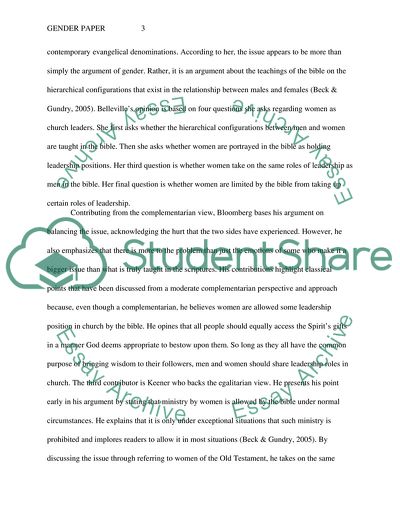Cite this document
(Two Views of Women in Ministry Book Report/Review Example | Topics and Well Written Essays - 3250 words, n.d.)
Two Views of Women in Ministry Book Report/Review Example | Topics and Well Written Essays - 3250 words. https://studentshare.org/gender-sexual-studies/1846561-gender-paper
Two Views of Women in Ministry Book Report/Review Example | Topics and Well Written Essays - 3250 words. https://studentshare.org/gender-sexual-studies/1846561-gender-paper
(Two Views of Women in Ministry Book Report/Review Example | Topics and Well Written Essays - 3250 Words)
Two Views of Women in Ministry Book Report/Review Example | Topics and Well Written Essays - 3250 Words. https://studentshare.org/gender-sexual-studies/1846561-gender-paper.
Two Views of Women in Ministry Book Report/Review Example | Topics and Well Written Essays - 3250 Words. https://studentshare.org/gender-sexual-studies/1846561-gender-paper.
“Two Views of Women in Ministry Book Report/Review Example | Topics and Well Written Essays - 3250 Words”. https://studentshare.org/gender-sexual-studies/1846561-gender-paper.


